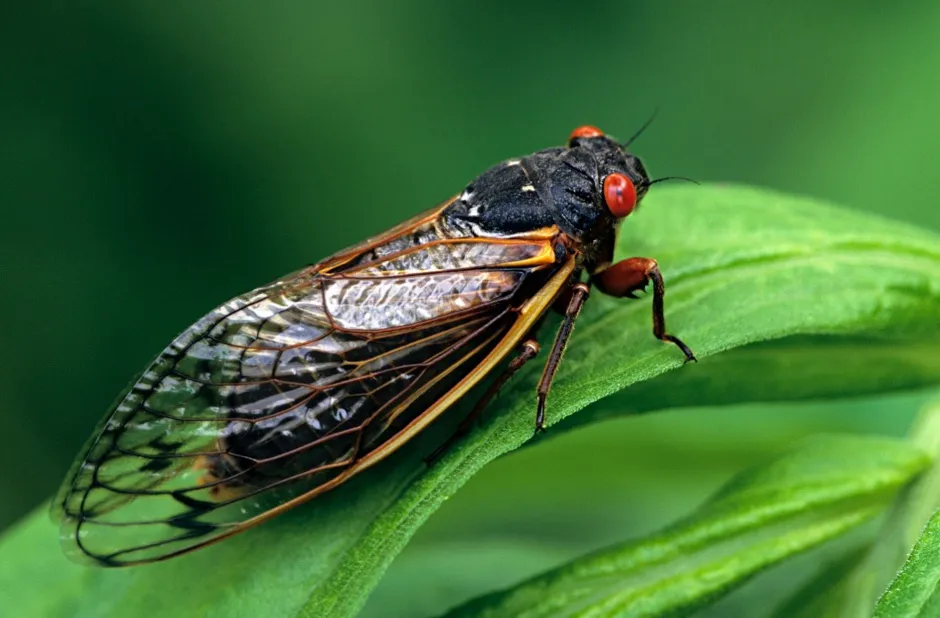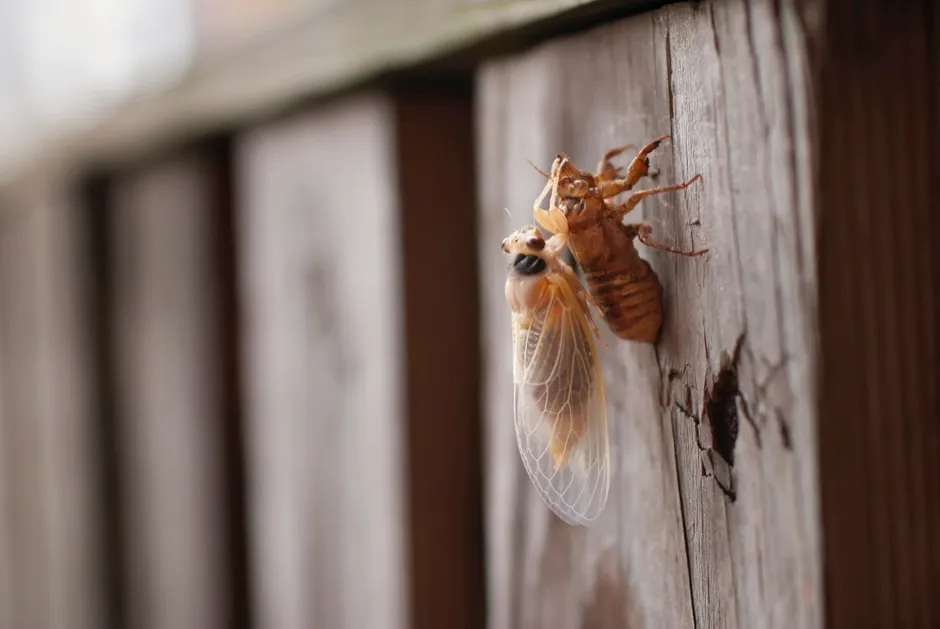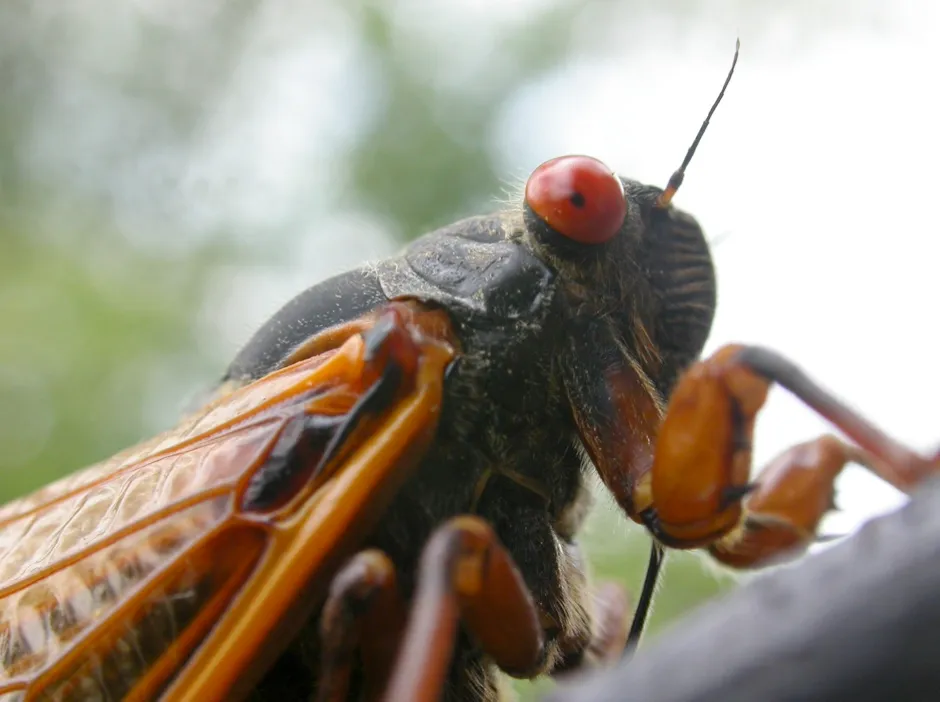Right now, in mid-May, a plague is taking place. After 17 years underground, so-called ‘Brood X’ cicadas are starting to pop out of the ground in their billions. Also known as the ‘great eastern brood’, they were last seen in 2004 (that's before YouTube, Instagram, Twitter and the Nintendo Wii even existed!) and will emerge across 15 states in the US, from Georgia in the south to New York in the north.
There are more than 3,000 cicada species around the world. Cicadas can be roughly grouped as ‘annual cicadas’, which can be spotted every year, and 13- to 17-year ‘periodical cicadas’ which are only found in North America. Despite their name, annual cicadas actually live for two to five years, but they can be seen annually because their life cycles overlap and they do not all coordinate in one mass emergence like periodical cicadas.

What is Brood X?
There are seven species of periodical cicadas, which are all in the genus Magicicada. Three of these are 17-year species and four are 13-year species. Brood X consists of all three 17-year species: M. septendecim, M. cassinii and M. septendecula.
There are 15 ‘broods’ in total, which are grouped according to the year in which they emerge. What makes Brood X so iconic is that it has the largest range and most impressive numbers of any other emergence. In fact, Brood X has been recorded since the early 1700s.
Fortunately, unlike the 'locust plagues' that can decimate crops, cicadas do not cause massive amounts of damage to plants and trees.
Read more about insects:
How many cicadas will there be in Brood X?
It's hard to say exactly how many cicadas will emerge with Brood X this year, says Prof Adam Hart, an entomologist at the University of Gloucestershire.
"In practice, estimating insects numbers is difficult and their patchy distribution makes it even harder. 'More than a billion' is certainly the right ballpark," he says.
Life cycle of a cicada
Cicada nymphs emerge from the ground once the soil temperature has reached about 17.7°C, usually sometime in the middle of May. They will come out in huge numbers after sunset and rapidly crawl to a nearby vertical structure, such as a tree, plant or bush. Here, they moult their exoskeleton and emerge as an adult, leaving the empty ‘skin’ behind. Their bodies are soft and pale at this point, rather like a hard-boiled egg. Within a week or so their bodies will become dark with distinctive red eyes as they fully harden off, by which time the adult cicadas are ready to mate!

Using a special organ on their abdomen called a ‘tymbal’, males start belting out their distinctive call to attract the females. In trees with lots of cicadas, this song can approach 100dB! Females cannot sing, but if she likes what she hears, she'll mate with the male, before using her ovipositor to cut a slit into the branch of a tree, where she’ll lay about 20 eggs. Males and females can mate multiple times, and females may lay as many as 600 eggs. Following a mating frenzy that lasts a few weeks, the adult cicadas will die.
Read more about insects:
After 6 to 10 weeks, the eggs will hatch, whereupon the young cicadas will drop to the ground and burrow themselves down into the earth. This subterranean environment will be their home, where they will suck fluids from the roots of trees and work their way through five ‘instars’ (growth stages) over the course of 17 years before emerging to start the process all over again. There is some evidence that the nymphs track the seasons by detecting fluctuating substances within the tree roots, allowing them to coordinate their emergence.
Why do they emerge every 17 years?
"For a long time the explanation was that the prime-numbered 17-year cycle, and the 13-year cycle of some other periodical cicada broods, prevented predators getting into phase with them by having a life cycle that was a divisor – prime numbers having no divisors," says Hart.
"But the current thinking is that it prevents hybridisation between broods with different cycles and mathematical models back this idea up."

Why do they all emerge at once?
So why do the periodical cicadas occur in such enormous numbers to start with? Some scientists theorise that it’s to do with predator avoidance. It is thought that with so many cicadas emerging at once – potentially over a million individuals in a single acre of land – birds, reptiles and mammals can scoff as many as they want, yet they’ll never be able to eat them all, making an individual cicada's odds of survival pretty high.
While it may be tough to imagine that anything that occurs in such whopping numbers could ever go extinct, there have been reports that Brood X hotspots have shown declining numbers in previous emergences. This could be because of trees being cut down to make way for development, which removes a food source for the nymphs.
This year, citizen scientists can get involved by tracking any signs of Brood X using the Cicada Safari app, available on Android and Apple, which should help experts learn even more about these intriguing insects.
